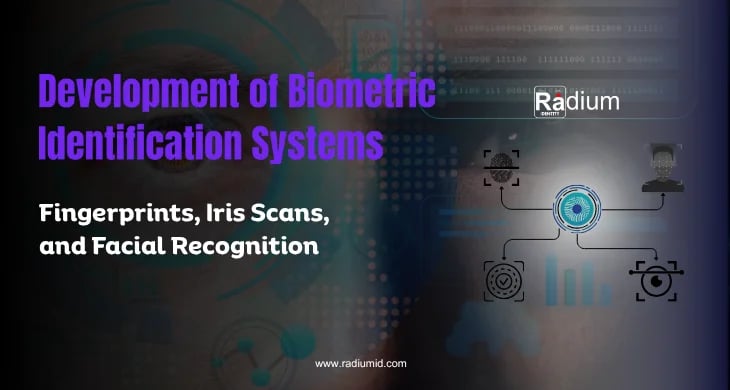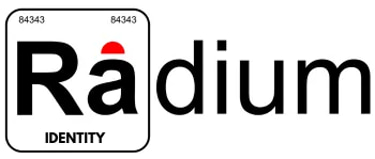The Development of Biometric Identification Systems: Fingerprints, Iris Scans, and Facial Recognition
Today's face recognition technology for identity control is based on the basic element of fingerprints found in ancient times. This article will talk about biometric systems that use fingerprints, iris scans and face recognition and discuss their origin, how they have improved and what problems they present.
Shubhanshi
7/12/20253 min read


Our ability to check identity has been changed by biometric technology in modern times. Today's face recognition technology for identity control is based on the basic element of fingerprints found in ancient times. This article will talk about biometric systems that use fingerprints, iris scans and face recognition and discuss their origin, how they have improved and what problems they present.
How Did Biometric Identification Begin?
For many centuries, physical characteristics have been used for identification. Clay tablets used in business in ancient Babylon carried fingerprints. At around the same time in history, China used fingerprints by merchants to confirm the authenticity of documents.
Ever since the 19th century, biometrics has played a role in criminal identification through Alphonse Bertillon’s anthropometric system. Even so, fingerprinting was introduced later and was found to be more secure and simpler to use across different applications.
Fingerprint Recognition: The First Biometric Standard
Fingerprinting was the first biometric method to be used around the world. In 1892, new ways of identifying criminals were proposed as Sir Francis Galton developed a method to analyze fingerprints. The use of fingerprinting became common for criminal investigation across countries at the beginning of the 20th century.
Thanks to digital technology, the process of fingerprint recognition was transformed. The FBI introduced IAFIS (Integrated Automated Fingerprint Identification System) in 1999 to enable quick comparisons of prints against an enormous database. At present, fingerprints sensors are installed in both mobile phones and lock systems, serving as secure and speedy ways to authenticate users.
Iris Scanning: Capturing Accuracy in Only a Second
By the late 20th century, it was proven that iris recognition was highly effective as a way to identify people. An iris recognition system was patented in 1987 by ophthalmologist Aran Safir and Leonard Flom, who saw that each iris has unique, detailed patterns. Iris recognition as we know it started in the 1990s, with algorithms able to recognize people through their iris patterns.
The benefits of iris scanning are that it doesn’t hurt people, has a low number of false matches and remains unchanged as someone ages. That’s why biometrics are suited for high-protection areas such as borders and restricted facilities.
Facial Recognition: From Science Fiction to Everyday Use
In the past few years, facial recognition technology has become something we use every day rather than just something you read about in science fiction. In the 1960s, early research helped build the technology behind computerized facial recognition. Because of progress in AI and machine learning, facial recognition systems are now more accurate and common.
These days, facial recognition is used for many things such as accessing devices, monitoring situations and investigating crimes. Most airports use facial recognition to verify passengers, helping boarding go more smoothly. Using such technology, retailers and event planners improve safety and the experience for their customers.
Improving and broadening the utilization of biometrics
Nowadays, biometric systems use several types of biometrics for extra safety and precision. Multimodal systems use three forms of biometrics—fingerprints, iris scans and facial recognition—to make it harder for imposters to overcome security.
Besides government and police, biometrics are being used in finance, health services and products made for regular customers. India’s Aadhaar system has registered over a billion citizens by connecting their biometric information to available services.
Challenges and Ethical Considerations
Although biometric systems provide many useful functions, they also lead to serious privacy and ethical questions. Unlike passwords, your biometric data cannot be changed if they are ever compromised. The possibility of someone accessing without consent or stealing data puts individual privacy at risk.
It has also been found that some biometric systems tend to make more mistakes when treating certain populations. It is important to handle these bias to ensure that biometric systems are fair and fair.
Different authorities change their guidelines to deal with these challenges. Writers are currently working on guidelines to control how biometrics are collected, stored and used, and seek to ensure that everyone's privacy rights are met and technology can develop safely.
How biometric identification will developed
The development of biometric identification will depend on constant innovation and follow high ethical standards. Examples of new technologies include contactless fingerprints and behavioral biometry that provide simple and safe ways for someone to log in.
Because biometric systems become part of our daily routines, balance security, do things practically and protect privacy means a lot. It is important to create strong politics and clear practice to encourage public trust and ensure that biometry helps everyone.
Conclusion
In general, biometric systems have advanced from being easy to becoming very important in modern technology. Improvement of security and convenience is good, but companies must as well focus on addressing moral and privacy problems related to them. Keep updated with more blog related to identification from Radium ID.
Solutions
Advanced identity verification and KYC services.
Quick Access
Access
© 2025. All rights reserved.
